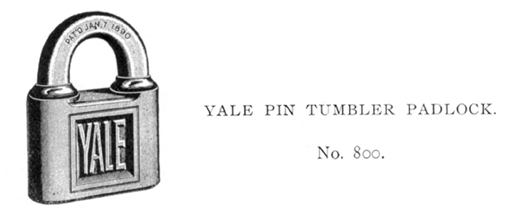The pin tumbler lock or Yale lock is one of the most famous lock that uses pins. The pins used in pin tumbler lock are of different lengths and secures the lock so it cannot be open without the correct key.
Pin tumblers locks are most commonly employed in cylinder locks which are also known as radial locks.
The tumbler lock is said to be one of the most primitive type of locks and their traditional forms were used during 4000 BC in Egypt. Ancient pin tumbler locks consisted of a wooden post affixed to the door, and a horizontal bolt that slid into the post that was used as the key.
American physician Abraham O. Stansbury patented the earliest form of a double-acting pin tumbler lock in 1805. The pin tumbler lock then patented was based on Joseph Bramah’s tubular pin tumbler lock.
Few years later in 1848, Linus Yale, Sr. invented the modern pin-tumbler lock which was later modified by Linus Yale, Jr. in 1861. Linus Yale, Jr. modified the original pin-tumbler lock designed by his father, by inventing a smaller flat key with serrated edges as well as pins inside the lock itself. The modified design was patented by Linus Yale, Jr. and the same the pin-tumbler lock design is still being used even today.
Modern Pin Tumbler Lock Design
The pin tumbler lock has set of pins inside the body. The corresponding key to the lock has a series of grooves on either side of the key’s blade which aligns itself inside the lock according to the pin-orientation.
The key grooves aligns lock pins to shear line and thus the lock is opened. The shear line is the alignment at which the lock plug and other components allow the key to rotate and thus you can lock or unlock the lock.
In pin tumbler lock design, all top and bottom pins inside the lock are separated at the shear line and you can easily rotate the key and open the lock.
The modern pin tumbler locks are commonly used in cylinder locks, lock which has it’s outer case a cylindrical hole in which the plug or key is inserted and then rotated to open the lock.

